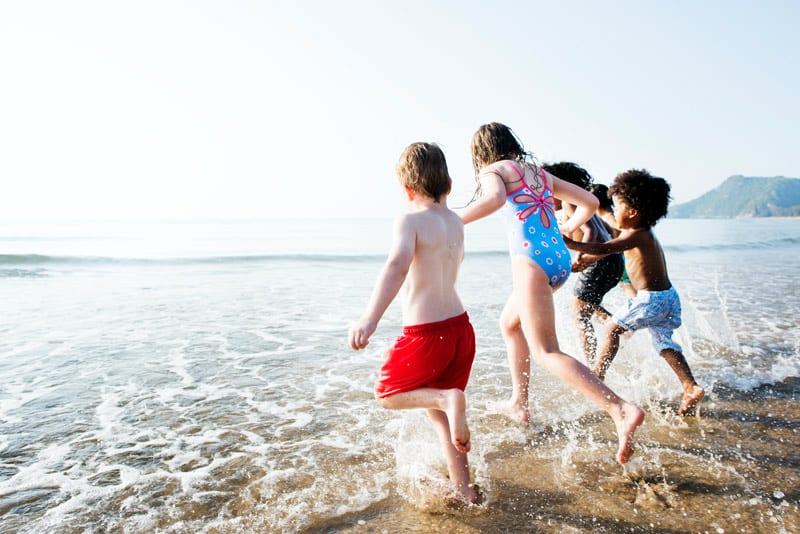Anxiety disorders, according to large studies, are by far the most prevalent psychiatric disorder in children in the United States. Parenting an anxious child, particularly if you are also an anxious parent, can be incredibly heart-wrenching. As a parent, you instinctually want to protect your children from harm and hardship. You baby-proof your home, purchase expensive protective equipment for your vehicles, help your children with their homework, and put parental protections on their electronic devices to guard them against potential danger. But when it comes to helping a child with anxiety, according to clinical studies, this is not the best strategy to take.
Why We Have Anxiety
Anxiety as a response or feeling is something hard-wired into all human beings to keep you vigilant of potentially harmful situations and dangers. Anxiety, in healthy doses, is necessary to survive in your environment. It becomes problematic, however, if that anxiety begins to disrupt your daily life and relationships with others.
Why Exposure to Anxiety Is Necessary
It is important that your children have a chance to experience a level of anxiety that they can tolerate and learn from, even if it isn’t pleasant. Insulating your child from situations that provoke a level of tolerable anxiety is only going to cause a lower tolerance to anxiety in the future.
Approaching Anxiety Exposure
As an example from my psychiatry practice, a child was displaying signs of anxiety whenever she was brought to a crowded market. The parents immediately stopped bringing the child to the market. This approach, as I explained to them, was setting the child up for more anxiety in the future. Rather than avoiding that market altogether, forever, they needed to actually work through a process to help her tolerate that situation.
What that approach looks like is the following:
- Normalize feelings of anxiety (everyone has them!)
- Talk about the feelings she has in that situation
- Discuss why avoiding that situation is harmful to her long-term
- Discuss strategies to cope with and think about that situation in a healthy way (breathing techniques, progressive muscle relaxation)
- Enter that situation with her in a supportive way for a short time at first
- Continue exposing her to the situation, gradually, and reward her for doing it
What CBT Lacks
CBT, or cognitive behavioral therapy, which is a mainstay of anxiety disorder treatment in children, works best in children who are motivated or interested in improving their anxiety. Unfortunately, most children are not highly interested in or motivated to tackle their anxieties head-on. Also, CBT does not treat the parental response to a child’s anxiety, which we know contributes significantly to not only the child’s anxiety but his or her exposure to anxiety-provoking situations.
Educating and treating parents of anxious children with therapies that reduce their parental tendency to accommodate or shield their children from anxiety-provoking situations has been shown to be as effective as treating children themselves with CBT. This approach is especially important to consider if a child refuses therapy. Parents have to learn to tolerate their child’s discomfort as much as the child has to learn to tolerate the anxiety-provoking situation.
Daily Doses of Anxiety
Lastly, you need to take a step back and observe all of your daily ways of parenting. Are you allowing for enough independence for your child to even begin to learn how to tolerate and make decisions in situations? Most modern parents accommodate their children so much that they are not given the opportunity to walk to school, make themselves a meal, go into a dark basement to retrieve something, or do other things that would provide for some natural exposure to low levels of anxiety. As a parent, you should make a list of changes you can make in daily life that will provide that for your children, and slowly begin introducing them.
Of course, every child-parent unit is unique, and the approach to helping the anxious child must be tailored to that combination. The end-goal, though, for both parent and child is to get closer to a place where anxiety, when encountered, is seen as something to face and get through rather than avoid.
If you or someone you know experiences mental health issues, it is important to seek help from a qualified professional. Our Resource Specialist can help you find expert mental health resources to recover in your community. Contact us now for more information on this free service to our users.
About the Author: Dr. Sean Paul, MD is a board-certified child and adolescent psychiatrist who treats children both in-person and via online psychiatry at nowpsych.com
Image by www.rawpixel.com
References:
- Costello EJ, Mustillo S, Erkanli A, et al. Prevalence and development of psychiatric disorders in childhood and adolescence. Arch Gen Psychiatry 2003; 60:837.
- Merikangas KR, He JP, Burstein M, et al. Lifetime prevalence of mental disorders in U.S. adolescents: results from the National Comorbidity Survey Replication–Adolescent Supplement (NCS-A). J Am Acad Child Adolesc Psychiatry 2010; 49:980.
- Kiri Clarke, Peter Cooper, and Cathy Creswell. 2013. The Parental Overprotection Scale: Associations with child and parental anxiety. https://www.ncbi.nlm.nih.gov/pmc/articles/PMC3808745/
- Child/Adolescent Anxiety Multimodal Study (CAMS): Rationale, design, and methods. 2010. https://psycnet.apa.org/record/2010-02930-001
- Parent-Based Treatment as Efficacious as Cognitive-Behavioral Therapy for Childhood Anxiety: A Randomized Noninferiority Study of Supportive Parenting for Anxious Childhood Emotions. 2020. https://www.jaacap.org/article/S0890-8567(19)30173-X/fulltext
The opinions and views expressed in any guest blog post do not necessarily reflect those of www.rtor.org or its sponsor, Laurel House, Inc. The author and www.rtor.org have no affiliations with any products or services mentioned in the article or linked to therein. Guest Authors may have affiliations to products mentioned or linked to in their author bios only.
Recommended for You
- The Intersection of LGBTQ+ Identity and Mental Health - December 9, 2024
- What Are the Signs of Self-Harm? A Comprehensive Guide - December 5, 2024
- People-Pleasing: Definition, Examples, and What You Can Do Instead - December 2, 2024





